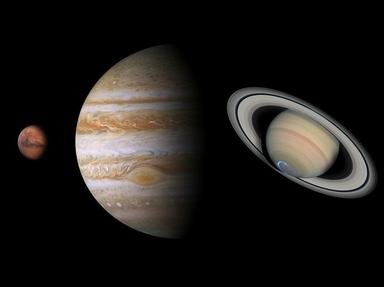Quiz Answer Key and Fun Facts
1. Aristarchus developed heliocentric model of the solar system
2. Ptolemy developed geocentric model of the solar system
3. Copernicus developed heliocentric model of the solar system
4. Patent filed for the telescope
5. Discovery of planet Uranus
6. Discovery of planet Neptune
7. Discovery of Mars's moons - Phobos and Deimos
8. Discovery of Pluto
9. First artificial satellite launched
10. First man on the moon
11. Launch of Pioneer 11
12. Launch of Voyager 2
13. Launch of Voyager 1
14. Voyager 2's closest approach to Uranus
15. Launch of the Hubble Space Telescope
16. Pluto "demoted" to dwarf planet
17. Voyager 1 crossed the heliopause
18. Fly-by of Pluto by New Horizons probe
19. Voyager 2 crossed the heliopause
20. Launch of the James Webb Space Telescope
Source: Author
TonyTheDad
This quiz was reviewed by FunTrivia editor
rossian before going online.
Any errors found in FunTrivia content are routinely corrected through our feedback system.
